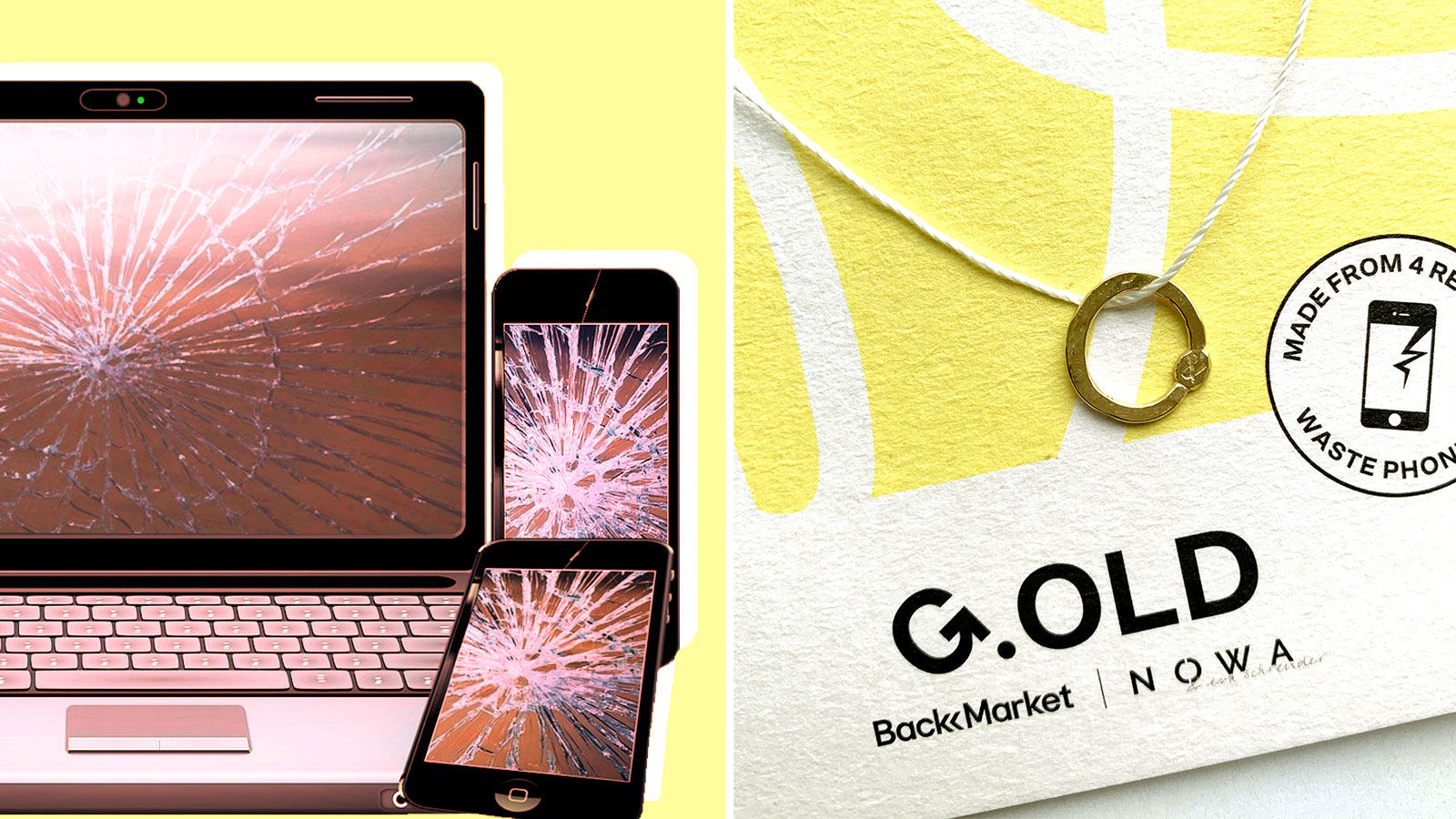Each year, the world throws out billions of dollars’ worth of rare and precious metals, including gold and silver, inside phones, computers, and other discarded electronics. To raise awareness about the treasure hiding in our trash, refurbished electronics marketplace Back Market has partnered with Dutch jewelry brand NoWa to produce a limited run of Valentine’s Day pendants using precious metals sourced exclusively from e-waste. Because nothing screams romance like saving the planet, right?
Serge Verdoux, managing director for Back Market’s Americas division, described two motivations for the project: showing consumers there are more possibilities for an old device than the garbage bin, and making used electronics sexier so that more folks want to buy refurbished over new.
“If we want to become mainstream, we almost have to make refurbished products cool,” Verdoux said. He compared the team’s new “G.OLD collection” to the recent trend of clothing lines made from secondhand garments, which similarly attempt to turn a used product into a fashion statement in order to keep it out of landfills.
Our discarded electronics certainly deserve the attention. Worldwide, humans produce a staggering 50 million tons of e-waste every year, a figure that is set to double in the coming decades if we don’t change our throwaway culture. Today, the U.N. estimates that only 20 percent of e-waste is properly recycled, with the rest eventually making its way into landfills where it slowly poisons the air, water, and soil. Like so much junk, e-waste tends to pile up in parts of the developing world that did little to contribute to the problem.
But while e-waste is a huge environmental issue, it’s also an economic one. Pound for pound, e-waste is 100 times richer in gold than a typical ore deposit, according to the U.N. For every million phones that are recycled instead of being sent to the landfill, the EPA estimates 772 pounds of silver and 75 pounds of gold can be recovered. And that’s to say nothing about all the rare earth metals locked up in our devices, which are mined at a significant environmental toll.
In recent years, a number of businesses have launched specialized e-waste recycling initiatives in order to recover these hidden riches. That includes Apple, which is experimenting with new ways of disassembling its own devices and harvesting the raw materials inside of them; the Tokyo Olympics committee, which is making the 2020 medals from recycled gadgets; and small-scale art and design studios.
NoWa is one of them. Its founder, Josette de Vroeg, has been making jewelry from smartphones for several years now, using precious metals supplied by Closing the Loop, an organization that collects e-waste across Africa and sends it to recycling facilities in Europe. When Back Market started shopping around for a partner to help it make a Valentine’s Day jewelry line, NoWa was an obvious choice, Verdoux said. He hopes that by advertising the pieces to Back Market’s large consumer base — the company’s online marketplace receives about 20 million visitors a month — the partnership can help educate the wider world about the value of our waste.
“Any idea that can help us say there’s a little more to that [old device] than a cheap iPhone, we try to develop,” said Back Market co-founder Vianney Vaute.
The G.OLD collection is just 100 pieces, gold and silver pendants handmade by Dutch jewelry designer Eva Schreuder priced between $43 and $55. While the project is a one-off for now, Vaute hopes it will become a springboard for future partnerships, either with NoWa or other small businesses that are finding clever ways to repurpose old electronics.
It’s important to bear in mind that recycling is only a partial solution to the environmental impact of our technology. For most devices, the lion’s share of that impact occurs during manufacturing, which means that as a society, we also have to do a much better job holding on to our old gadgets for longer and ensuring sure they get a second life before they get scrapped. Companies have a responsibility to help by making their devices easier to repair.
Still, given the scale of the e-waste problem, any efforts to chip away at it, however small, are welcome. And for those of you who totally procrastinated getting your partner a gift this year, this particular solution might just be a relationship-saver. It’s certainly more affordable than a lab-grown diamond.


